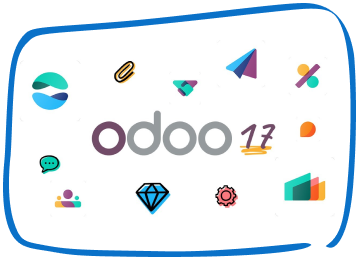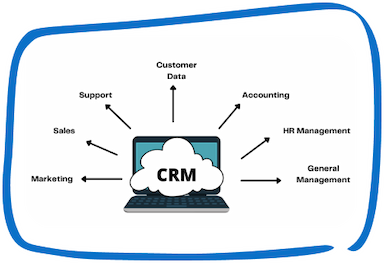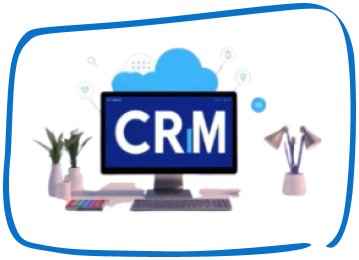Whether you’re in the planning stages of your ERP evaluation or your team has already initiated the process, it’s essential to review and validate your ERP selection criteria. With approximately 50% of ERP projects not meeting their Go-Live deadlines and many ending in failure, the stakes are high. No one wants to be associated with a failed ERP project.
Fortunately, having a well-structured ERP evaluation plan that incorporates the right selection criteria increases your chances of choosing the ideal ERP vendor or ERP Solution Provider.
Prior to Exploring ERP Ranking Criteria
Have you developed a Business Requirements Document (BRD)? If you have, you can proceed to the next section.
Have you identified the disparity between your ideal ERP solution and your current system’s capabilities? If you haven’t created a Business Requirements Document or need guidance on how to create one, you can refer to “Outdated, clunky ERP? Start an ERP Evaluation with this Simple Plan.”
ERP Selection Criteria Impacting Return on Investment (ROI) and Total Cost of Ownership (TCO) for Cloud ERP Systems
You might be wondering why we are assuming Cloud ERP systems. Well, that’s because 90% of new ERP purchases are Cloud ERP implementations, making it a reasonable assumption that your team is considering one of these systems.
Since you’ve already assessed the value of an ideal solution in comparison to your current system (as discussed in the previous steps), it’s time to delve into the cost considerations for a new Cloud ERP system.
One-Time Capital Expenses
These include ERP system installation and configuration charges, which can be substantial. ERP implementations are intricate, and you will likely require external assistance. The ERP vendor or a Solution Provider will handle the installation and configuration of your new ERP system.
Yearly Operational Subscription Fees
This category covers ERP software licenses, which encompass the base system and any other standard functionalities needed. ERP User licenses are also part of this expense, with more users resulting in higher ongoing costs. It’s advisable to start with the minimum number of users required and then expand as the need for more user licenses arises. Support licenses, a percentage of the software license, or a fixed yearly fee, and training charges, which may involve upfront training as part of the implementation cost and potential ongoing training expenses, are other factors impacting yearly operational subscription fees.
ROI and TCO Calculations – Additional Considerations
Compatibility Issues with Current Systems
While your ERP is designed to streamline business processes and integrate data from existing systems, there may be limitations to integration. If implementing the new solution necessitates replacing other systems, those costs should be factored into your financial assessments.
Implementation Duration
ERP implementation timelines can range from as short as one month to well over a year. Extended implementation periods can impact the payback period in your ROI calculations. A shorter project duration initiates the payback period more quickly.
Customization
Customization efforts will be included in your initial capital investment if needed. Future customizations may also become necessary as your business expands. Evaluating the ERP supplier’s track record to determine their proficiency in customizing the solution for your specific needs is essential.
Additional Selection Criteria
Vendor’s Industry Expertise
In addition to assessing ERP software costs, it’s crucial that your chosen ERP Solution Provider possesses industry-specific expertise. Ideally, they should have a track record of successful ERP implementations within your particular sector. Another method for gauging expertise is to request an implementation plan. For instance, your ERP project will involve migrating data from other systems and spreadsheets to the new ERP. Inadequate data migration is a significant risk for implementation failure, so you can ask the ERP supplier for a standard data migration plan.
Vendor’s Product Roadmap
Recognizing that your business will evolve over time, with future requirements potentially differing from today’s needs, is crucial. If you’re replacing an existing ERP system, you’ve likely experienced this scenario. Your current provider may not have adapted to your changing needs, prompting you to explore alternative solutions. Accessing the product roadmap is critical for understanding how the prospective supplier plans to enhance, expand, and support their product in the future. This insight will assist your team in assessing whether your future requirements align with the prospective supplier’s solution.
Technology
Leveraging the advantages of continually evolving innovative technologies may be feasible. These technologies extend the capabilities of an ERP system. Artificial intelligence (AI) and Machine Learning (ML) enhance business processes and predictive analytics, optimizing the customer experience and delivering data for more personalized role-based insights. Internet of Things (IoT) devices can transmit information to the ERP, while blockchain technology offers faster transaction processing and reduced associated costs.
Customer Experience
When acquiring an ERP system, your team is entering a long-term relationship. While the purchase is a transactional event, it’s just the beginning of your ERP journey. Now is the ideal moment to address the following questions:
Is the ERP software company committed to making the purchasing process straightforward for your organization?
Does your team find the interactions with the potential ERP Solution Provider enjoyable and productive?
Is the organization one you would take pride in collaborating with and recommending to others in the future?
Vendor Support
The extent of support provided by a vendor holds significant importance.
Dave Luter, a senior consultant at the business consultancy Netlogx in Indianapolis, emphasizes the critical role of support. He suggests that purchasing teams should investigate whether the support is primarily phone-based, inquire about the availability of local support, and evaluate the experience level of technicians. Furthermore, the existence of a customer council can be a valuable factor to consider. Participation in a customer council offers a company the opportunity to influence the product roadmap.
Businesses should also take into account their employees’ preferred learning methods. Luter suggests exploring the types of education and training offered. While many companies offer training videos, they may need to complement them with classroom or hands-on training if videos alone prove insufficient.
Conclusion
The concepts outlined in this blog aim to serve as a reference for completing your ERP evaluation criteria checklist. How you apply this information is at your discretion. Some teams opt to assign weights to various selection criteria and calculate an overall score, while other organizations may identify additional criteria beyond those listed here. You are in the best position to determine how to make the most of this information. Its purpose is to assist you in making the most informed ERP selection, ensuring a seamless ERP implementation, enhancing organizational productivity, and minimizing employee stress.
Speak with Our Team!
4.9 Stars
1k+ reviews on






